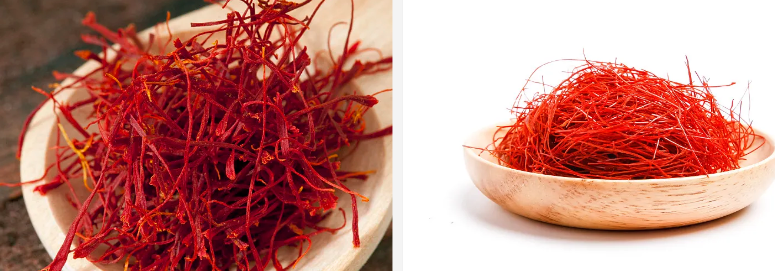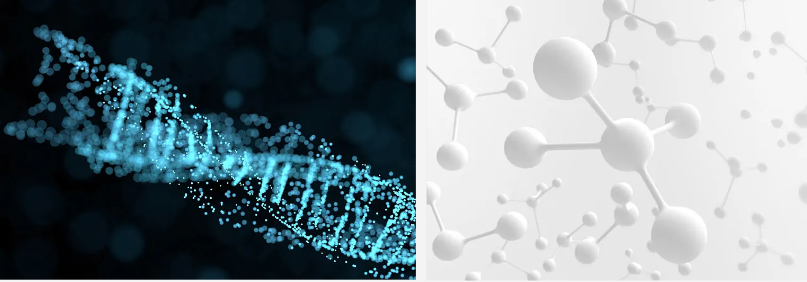Why Saffron Extract Is A Boon For Your Sexual Health?
2024-01-30 14:40:24
Introduction:
Saffron Extract (botanical name: Crocus sativus L.), also known as saffron and crocus, is a perennial flower of the genus Saffron in the family Iridaceae and a common spice. Flowering stems are very short and do not stick out of the ground; 1-2 flowers, light blue, reddish-purple or white, scented.
It is a native species of SW Asia, first cultivated by the Greeks. Mainly distributed in Europe, the Mediterranean and Central Asia and other places, the Ming Dynasty when introduced to China, the "Compendium of Materia Medica" will be included in the drug and so on. It is a valuable traditional Chinese medicine with strong physiological activity, and its stigma is used medicinally in Asia and Europe as a sedative, expectorant and antispasmodic, for the treatment of gastric disorders, menstruation, measles, fever, yellow bile, and enlargement of the liver and spleen.

Main ingredients: safranal,crocin, crocetin
Safranal occurs naturally in saffron oil. It has the unique aroma of saffron and is liquid in appearance. 2. Synthesis route: The synthesis of safranal aldehyde is relatively difficult, and it is not yet possible to produce it on an industrial scale. All commercially available products are mass-produced products. 3. Saceral is not widely used and is only used in small amounts in high-end daily chemical flavor formulas to prepare fig, tea and woody and herbal food flavors.
Crocin (Class II traditional Chinese medicine, freeze-dried agent) is a water-soluble flavonoid compound extracted from crocin. Pharmacodynamic literature reports that crocin can reduce coronary resistance, increase coronary flow and myocardial nutrition. effect. Crocin can reduce the scope and degree of experimental myocardial infarction in rabbits, and improve damage and necrotic electrocardiographic changes. Pharmacodynamic studies have shown that 7-28 mg/kg of crocin can significantly inhibit the ST segment increase in the epicardial electrogram caused by ligation of the left coronary artery in dogs, reduce the release of serum acid kinase, and reduce the area of myocardial infarction. crocin has obvious effects on experimental thrombosis and platelet aggregation in rats, and is a good drug worthy of research and development.
Crocemic acid is a chemical component contained in saffron. Its scientific name is 2-naphthol-8-sulfonic acid. It is a colorless crystal. Crocetin is used in the manufacture of acidic and direct azo dyes. Crocetin is obtained by sulfonating 2-naphthol with 98% sulfuric acid at low temperature, adding soda ash to precipitate a small amount of Schiff's acid, and filtering it out, then obtaining it from the mother liquor.
Crocetin can also be esterified with ethanol to produce ethyl crocetin. Ethyl crocetin has strong penetrating power and permeability, and orange oil has a natural, fresh aroma of apple, rose and turcone, with a woody aroma. The fragrance stays on the scent paper for several days. Therefore, it is widely used in soaps and laundry detergents, but its main use is still in perfumes and toilet fragrances. It is widely used in rose-flavored formulas, and even a small amount can have a penetrating top fragrance effect. The product content is 1%. It can also be used in fruit flavors, especially in apple and pear flavor formulas. It can play the main role of rose-woody fragrance in these daily chemical flavors. The product can give a good natural effect to the fragrance.
Function:
Medicinal Value
Saffron is a famous and precious Chinese medicine, the main medicinal part is the small stigma, so it is very precious. Flowers contain carotenoid compounds, mainly saffron glycosides, saffron acid dimethyl ester, saffron bitter glycosides and volatile oil, the oil is mainly safranal etc.
The dried stigma is sweet and flat in nature, and can activate blood circulation and remove blood stasis, disperse depression and open the knot, and relieve pain. It is used in the treatment of melancholy and depression, chest and diaphragm congestion, vomiting blood, cold fever, panic and trance, women's menstrual closure, blood stagnation and menstrual irregularities, postpartum discharge, blood stasis and pain, measles, bruises, etc. It is used abroad as a sedative and wind repellent. Used abroad as a sedative and wind repellent. Activating blood circulation and removing blood stasis, cooling the blood and removing toxins, relieving depression and tranquilising the mind. Warming poisonous hair spots, melancholy and congestion, palpitation and frenzy.
Protect eyesight.
Saffron extract can protect retinal ganglion cells (RGCs) by improving retinal blood circulation, blocking the damage caused by ischemia and hypoxia to retinal ganglion cells (RGCs) under chronic high intraocular pressure conditions. This indicates that saffron extract may protect RGCs by reducing free radicals in the retina and blocking free radical damage to the membrane structure, subcellular organelles and nuclei of RGCs.
Spices
Saffron is prized for its pungent golden stigmas, which are used to flavour and colour foods and as a dye. It is used as a colouring and flavouring ingredient in Mediterranean and Oriental cuisine, as well as in English, Scandinavian and Balkan breads; it is also an important ingredient in the richly flavoured fish stew of French cuisine; it is commonly eaten orally, in water, in wine, in rice and steamed eggs, etc. It should not be used in excessive quantities. Saffron should not be used too much and should not be cooked at too high a temperature. Ancient India distilled saffron stigmas to obtain a golden water-soluble cloth dye, which was used to colour royal garments in several cultures. Saffron was also used to colour poultry, seafood and fish.

For related products, please visit our website:www.sxytorganic.com
Contact Us For More Details>>
E-mail:sales@sxytorganic.com
Tel: +86-029-86478251
_1737093401309.png)
